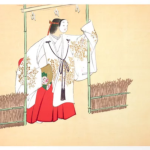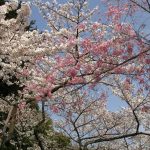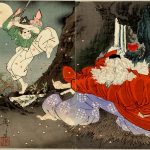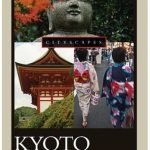I am very happy to welcome a new regular contributor to Deep Kyoto: Mr. John Dougill. Born in Yorkshire, John Dougill first came to Japan in 1986 and to Kyoto in 1994. He has taught in several universities but is now happily employed at Kyoto’s Ryukoku University as professor of British Studies. His fascinating book Kyoto: A Cultural History makes his love for the city … [Read more...] about Introducing John Dougill
Culture & Tradition
Japanese Noh Theatre
Performances for the Gods Ian Ropke writes... Japanese Noh theatre is one of the oldest dramatic forms in world. The early developments of Noh lie in the festive entertainment of various kinds (dance, simple plays) performed at temples and shrines in the 12th and 13th centuries. Noh drama for much of its history was favored by the samurai, priest and aristocratic … [Read more...] about Japanese Noh Theatre
Cherry Blossoms at Heian Jingu
One of the best books you can read about Kyoto is a novel by Yasunari Kawabata: The Old Capital. It is both a great story, and a wonderful guide to the city and its seasonal traditions. One of the most famous scenes in that book is in the gardens of Heian Jingu when the characters Chieko and Shin'ichi go to see the cherry blossoms. I visited Heian Jingu yesterday to see these … [Read more...] about Cherry Blossoms at Heian Jingu
京町家の再生 – Machiya Revival in Kyoto
I've just finished reading this fine little book about the machiya (町家) of Kyoto. Machiya are the traditional narrow wooden townhouses of the old capital. Once, their tiled roofs and wooden lattice fronts typified Kyoto’s urban landscape. However, since the end of WW2 this traditional landscape has in large part been replaced by high rise buildings and parking lots. 13% of … [Read more...] about 京町家の再生 – Machiya Revival in Kyoto
Tengu
Ian Ropke writes: The mountains throughout Japan are home to a very long-nosed creature known as a tengu or mountain goblin. The origins of tengu are not very clear. They can be found in both Shinto and Buddhist texts. Some scholars trace the origin of the tengu to one of the primary gods of Shinto: Susano-o, who shares many of the characteristics for which tengu are feared … [Read more...] about Tengu
Kyoto: A Cultural History
Disclosure: Links in this article to Amazon or Amazon Japan are affiliate links. The owner of this website may earn a commission from qualifying purchases. In the movie “Lost in Translation”, the character of Charlotte (played by Scarlett Johansson) takes a day trip alone to Kyoto. As she wanders through a temple and a shrine her sense of being lost in this alien land is … [Read more...] about Kyoto: A Cultural History







